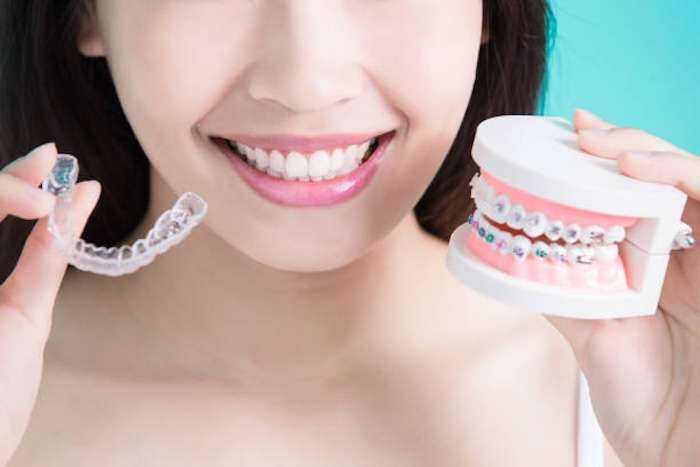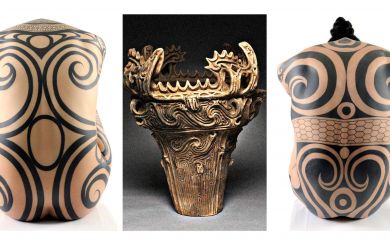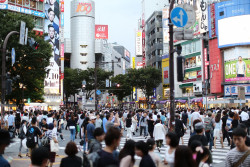
For English speakers in Tokyo, access to dentists who can communicate effectively is convenient, and there are lots of options to choose from. This comprehensive guide, updated for 2025, provides detailed information on a wide range of English-speaking dentists in Tokyo and its surrounding areas.
Additionally, you might also be interested in checking out our guide to English-speaking clinics in Tokyo.
The Bluff Medical and Dental Clinic
The Bluff Medical and Dental Clinic has been offering medical and dental services in English and Japanese since 1863. The clinic provides a comfortable, fully English-speaking environment, making it an ideal entry point for many foreign residents into the Japanese medical system. It also accepts credit cards and Japanese insurance, and speaks English and Tagalog.
● Hours: 9 am-12:30 pm, 1:30 pm-5 pm (Mon, Thu, Fri), 9 am-1 pm (Sat)
● Closed: Saturday afternoons, Sundays, National Holidays, Dec. 25
● Phone: 045-641-6961
● Website: bluffclinic.com
● Location: 82 Yamate-cho, Naka-ku, Yokohama-shi
Tokyo International Dental Clinic Roppongi (TIDS)
TIDS offers Scandinavian-style dental treatments, focusing on preventative care and natural teeth preservation. Their comprehensive approach covers everything from routine check-ups to complex procedures, making them a popular choice among English speakers.
● Hours: Tue-Fri 10 am-7 pm, Sat-Sun 9 am-6 pm
● Closed: Monday and National Holidays
● Phone: 03-5544-8544
● Website: tids.jp
● Location: TIDS Bldg 2F, 5-13-25 Roppongi, Minato-ku
United Dental Office
United Dental Office is staffed by U.S.-licensed dentists, offering a range of services including general dentistry, cosmetic treatments, and specialized procedures. Their American-standard practices make them particularly appealing to English speakers.
● Hours: Mon-Tue, Thu-Fri, Sat 9 am-6 pm
● Closed: Wednesday and Sunday
● Phone: 03-5570-4334
● Website: uniteddentaloffice.com
● Location: 1F Maruyama Bldg, 2-3-8 Azabudai, Minato-ku
Hitomi Dental Office
Hitomi Dental offers bilingual services, blending Japanese and Western dental practices. With two convenient locations, they provide a wide range of treatments in a comfortable environment.
● Hours: 10 am – 7 pm
● Closed: Sunday
● Phone: Edogawabashi Office: 03-6280-8789
Akasaka Office: 03-6277-7983
● Website: hitomidental.com/ja
● Locations:
Edogawabashi: 1-24-6 Sekiguchi, Bunkyo-ku
Akasaka: 2-13-8 Akasaka, Minato-ku
Trust Dental Clinic
Trust Dental Clinic has a strong reputation among Tokyo’s international community, with about 70% of its patients being international residents. In addition, they offer comprehensive dental care, including general, cosmetic, and specialized treatments.
● Hours: 9:30 am-5 pm
● Closed: Saturday
● Phone: 03-3402-1501
● Website: trustdental.jp
● Location: 1-11-1 Jingumae, Shibuya-ku
Yamanaka Dental Clinic
Yamanaka Dental Clinic is known for its world-class dental care, emphasizing trust and open communication. They offer a wide range of services, including advanced implant treatments.
● Hours: Mon-Tue, Thu-Fri 10 am-1 pm, 2:30 pm-7:30 pm;
Sat 10 am-1 pm, 2:30 pm-5 pm
● Closed: Wednesday, Sunday, National Holidays
● Phone: 03-3304-8217
● Website: hamadayama-implant.com
● Location: Excellent Hamadayama 1F, 3-33-18 Hamadayama, Suginami-ku
Kim Dental Clinic
Kim Dental Clinic stands out with its Korean dentist who is fluent in Korean, Japanese, and English. They specialize in implants, orthodontic treatment, and whitening.
● Hours: 10 am – 7 pm
● Closed: Thursday, Sunday, and public holidays
● Phone: 03-3207-8461
● Website: kimdentalclinic-tokyo.com
● Location: 2 Chome-41-8 Kabukicho, Shinjuku-ku
Ikebukuro Dental Clinic
This clinic is known for its English-speaking staff and specializes in root canal treatments, aesthetic precision treatment, and cleaning. They also offer mouthpiece correction and implants.
● Hours: 10 am -2 pm, 4 pm – 7 pm
● Closed: Wednesday
● Phone: 03-5985-1180
● Website: ikebukurodc.com
● Location: 1 Chome−16−10, Nishiikebukuro, Toshima-ku
Tabo Dental Clinic
Tabo Dental Clinic, located in Saitama prefecture, offers a range of services with dentists trained in the US. They provide detailed treatment plans and home care guidance.
● Hours: Mon-Fri 9 am -12 pm, 1 pm – 6 pm;
Sat-Sun 9 am -12 pm, 1 pm – 6 pm
● Phone: 048-711-8241
● Website: tabo-shika.com
● Location: 11-5 Higashinakacho, Urawa Ward, Saitama
Mihara Dental Clinic
Dr. Mihara, with over 15 years of experience, is known for his gentle approach and clear communication in English. The clinic offers general treatment, implants, cosmetic dentistry, pediatric care, and orthodontics.
● Location: Shinjuku
● Website: miharadentalclinic.com
Motoazabu Hills Dental Clinic
Dr. Jun Suzuki is highly regarded in the expat community for his professionalism and compassion. The clinic offers a wide range of services, including general dentistry, pediatric dentistry, cosmetic procedures, orthodontic treatment, oral surgery, and implant dentistry.
● Website: hills-dc.com/index_e
Lion Heart Dental
Led by Dr. Ryota Kimura, a board-certified specialist in oral and maxillofacial surgery, Lion Heart Dental offers a range of services, including cosmetic dentistry, general dentistry, restorative dentistry, implants, and facial injectable treatments.
● Phone: 03-6890-8575
● Website: lionheartdental.com
Kasumigaseki Dental Office
This clinic specializes in providing high-quality dental care for English speakers and residents in Tokyo, with native English-speaking dentists offering services including implants and more.
● Website: commongate-dc.com/english
K-SMILE DENTAL CLINIC
K-SMILE DENTAL CLINIC uses advanced technology, including dental magnifiers and LED lights, for all implant treatments to ensure precision.
This comprehensive list provides a wide range of options for English-speaking dental care in Tokyo and the surrounding areas. Always check the clinic’s website or call directly for the most up-to-date information on services, hours, and locations.
● Location: Ueno ORAGA Building 6F, 6-16-16 Ueno, Taito-ku
● Website: shinbi119.com/en
FELIZ HIROO DENTAL CLINIC
FELIZ HIROO DENTAL CLINIC offers a range of services including general dentistry, pediatric dentistry, cosmetic dentistry, orthodontics, and implants. The clinic is open on weekdays until 7pm and also provides services on Sundays and holidays, making it convenient for those with busy schedules. They recommend making reservations for whitening, cleaning, and regular check-ups.
● Hours: 11 am – 1 pm, 2:30 pm – 7 pm (Mon, Wed, Thu, Fri),
11 am -1 pm, 2:30 pm- 5 pm (Sun & Holidays)
● Closed: Tuesday and Saturday
● Phone: Not provided
● Website: ebisu-hiroo-shika.com/index-eng
● Location: Shibuya-ku, Hiroo 1-11-5, Asahi Hiroo Mansion 1F, 204
Akasaka Hiro Dental
Dr. Hironobu Nishihara (Dr. Hiro) leads Akasaka Hiro Dental, offering comprehensive care in general dentistry, dental implants, prosthetics, and oral rehabilitation. As a board-certified dental implant specialist licensed in both Japan and Germany, Dr. Hiro provides dental care in English, German, and Japanese. The clinic uses advanced technology and techniques to achieve efficient treatment outcomes in a warm, relaxed environment.
● Hours: 9:30 am -1 pm, 2 pm – 6:30 pm (Mon-Fri), 9:30 am -2:30 pm (Sat)
● Closed: Wednesday, Sunday, and National Holidays
● Phone: 03-6230-9575
● Website: akasaka-hiro-dental.com/english
● Location: Akasaka 2-14-31-2F, Minato-ku
Kim Dental Clinic
Kim Dental Clinic specializes in dental implants, orthodontic treatments, and teeth whitening. The clinic is known for its transparent approach, providing detailed explanations and upfront cost information. With a multilingual staff, including a Korean-born doctor fluent in English, the clinic caters to a diverse international patient base. Their patient-centered approach focuses on both aesthetic and functional outcomes.
● Hours: 10 am – 7 pm
● Phone: 03-3207-8461
● Website: kimdentalclinic-tokyo.com
● Location: WBC Shinjuku 10F, 1-3-14 Okubo, Shinjuku-ku
Hitomi Dental Office
Hitomi Dental Office, with two convenient locations in Edogawabashi and Akasaka, offers bilingual services that blend Japanese and Western dental practices. The clinic provides a wide range of treatments, from routine check-ups to advanced restorative procedures. Dr. Hitomi Hayashi, with over 25 years of experience, leads a team committed to creating a comfortable and reassuring environment for international patients.
● Closed: Sunday
● Hours: 10 am -7 pm
● Phone: Edogawabashi Office: 03-6280-8789, Akasaka Office: 03-6277-7983
● Homepage: hitomidental.com
● Locations:
Edogawabashi: 1-24-6 Sekiguchi, Bunkyo-ku
Akasaka: 2-13-8 Akasaka, Minato-ku
Ambassador Dental Office
Ambassador Dental Office, located in the heart of Tokyo, specializes in providing high-quality dental care to the international community. Their experienced team of dentists and staff are fluent in English, ensuring clear communication throughout your treatment. The clinic offers a comprehensive range of services, including general dentistry, cosmetic procedures, and emergency care.
● Closed: Sunday and National Holidays
● Hours: Mon-Sat: 9am-5pm
● Phone: 03-3584-2278
● Homepage: tokyodentist.com
● Location: Akasaka Kato Bldg 2F, 2-22-15, Akasaka, Minato-ku
● Access: 5 min from Roppongi-itchome sta. Exit 3
Fukutomi Dental Office
Fukutomi Dental Office, situated in Shibuya, is known for its commitment to excellent customer service in English. Dr. Fukutomi, a member of the American Dental Association, leads a team that provides a wide range of services including checkups, cleaning, and esthetic dentistry. The clinic prides itself on using state-of-the-art equipment and techniques to ensure the best possible care for its patients.
● Closed: Wednesday, Sunday, National Holidays
● Hours: 9:30 am-1 pm, 2 pm-6:30 pm (Mon-Fri), 9:30 am-1 pm, 2 pm- 2:30 pm (Sat)
● Phone: 03-6407-0229
● Homepage: tokyodentalesthetics.com/en
● Location: 27-7 Motoyoyogi-cho, Shibuya-ku
Trust Dental Clinic
Trust Dental Clinic, located near Harajuku Station, is led by Dr. Oikawa, who has over 20 years of hospital dentistry experience. The clinic offers a comprehensive range of services, from general check-ups to complex procedures like implants and root canals. In particular, Trust Dental Clinic is popular among the expat community, with about 70% of its patients being foreigners. Their focus on patient comfort and clear communication makes them an excellent choice for English-speaking patients.
● Closed: Saturday
● Hours: 9:30 am-5 pm
● Phone: 03-3402-1501
● Homepage: trustdental.jp/english
● Location: 1-11-1 Jingumae, Shibuya-ku







